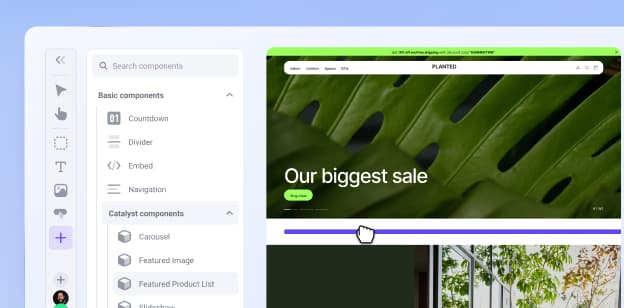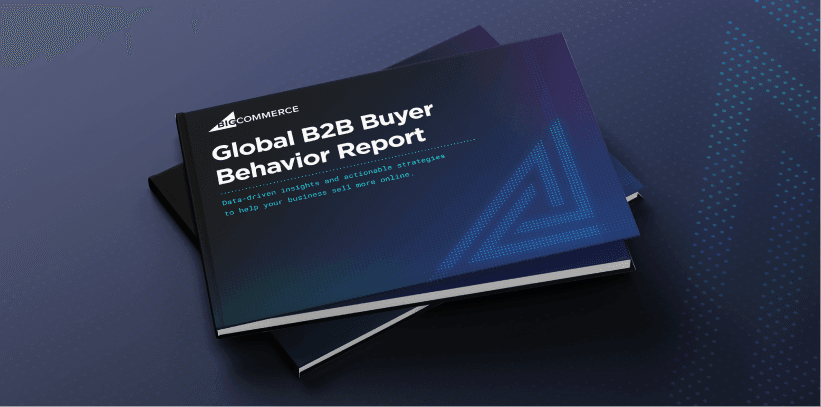by Nicolette V. Beard
03/04/2025
By leveraging upselling and cross-selling techniques, ecommerce businesses can significantly boost their transaction value and overall revenue. These powerful approaches drive a higher average order value (AOV) for online retailers, with research showing they can generate a substantial 42% more income from both new and existing buyers. Strategic upselling efforts can also increase your customers' lifetime value by an impressive 20% to 40%, a promising prospect for your business's financial growth.
These methods boost your bottom line, strengthen buyer relationships and enhance satisfaction. Amazon, for instance, discovered a 10% increase in revenue by implementing such strategies in its digital marketplace. The company reports that an impressive 35% of total revenue stems directly from these sales tactics, a testament to the value they bring to the business and the customer.
The value of effective upselling becomes apparent when examining customer retention benefits. Selling additional products to people purchasing from you yields 5 to 25 times more profit than acquiring new customers. This revenue potential explains why many successful online shops prioritise expanding relationships with current buyers rather than constantly chasing new ones.
Both approaches share a common goal: providing extra value instead of restricting shoppers to familiar items. Businesses aim to enhance purchase amounts while educating buyers about options they might otherwise miss. Success hinges on genuinely understanding what customers appreciate and responding with merchandise that addresses their needs. When executed thoughtfully, these strategies create win-win situations where shoppers discover perfect solutions while retailers enjoy increased sales.
What is cross-selling?
Cross-selling connects existing customers with complementary products that address needs their initial purchase doesn't cover. By presenting these options strategically, retailers secure sales that shoppers might otherwise make elsewhere. An example of cross-selling would be a customer buying a blow dryer; offering a comb alongside creates a natural pairing.
McKinsey research reveals that cross-selling tactics return impressive results: businesses implementing cross-selling techniques boost revenue by 20% while increasing profits by 30%.
Credit card and insurance companies aren't the only ones mastering cross-selling techniques. Fashion enthusiasts have proven to be an exceptionally receptive market for this strategy. Just Sunnies demonstrates this success with its impressive collection of over 13,000 sunglasses from over 130 brands, offering fashionable eyewear and optical solutions. To encourage additional purchases, the brand integrates Klaviyo to deliver personalised product recommendations based on past purchases. This, along with other strategies, has helped Just Sunnies achieve a 15% increase in sales and a 21% boost in conversion rates.
Online retailers typically showcase related items on product pages, during checkout, and in follow-up communications. This approach familiarises shoppers with your entire product range and encourages repeat purchases. Customers often discover offerings they didn't realise you carried, strengthening their trust in your ecommerce store as their go-to source for specific needs.
What is upselling?
Upselling encourages customers to purchase a more expensive product or premium version of a product they are already considering. It focuses on offering a better, enhanced, or feature-rich alternative to increase AOV.
Showing comparison charts helps customers visually compare and contrast the features and benefits of different product versions to clarify the value proposition. Software companies commonly demonstrate a "Premium" priced version of software with more features and support compared to the "Basic" or the "Freemium" version.
No online store provides a natural upsell opportunity better than BigCommerce customer Saddleback Leather Company. Founder Dave Munson turned what was originally a one-off book bag into a worldwide brand synonymous with craftsmanship and quality. Their newly streamlined operations unlocked greater productivity, leading to a 40% increase in AOV.
5 Keys to a Stellar Checkout Experience
Discover how to implement mobile wallets, guest checkout, multi-language support, accelerated payments, and embedded checkouts to create a seamless, global-friendly experience that keeps your customers coming back for more.
Key differences in when to use cross-selling vs. upselling
Cross-selling involves recommending complementary products that enhance the original purchase while upselling strategies encourage customers to buy a more premium version of the same product. Both strategies effectively increase AOV, but cross-selling works best when customers need additional items to complete or complement their purchase. At the same time, upselling techniques are most effective when customers are already interested in a product category and might benefit from premium features.
When to cross-sell products.
Cross-selling ecommerce shines when you suggest related add-ons that boost the value of what your customer is buying. Consider recommending accessories when someone buys a new camera or suggesting shoes to match a dress purchase. This approach makes shopping easier by anticipating people's needs, saving them time looking for compatible items. By offering these complementary products, you enhance their original purchase and likely make them happier with their shopping experience.
Cross-selling also works wonderfully with smaller, less expensive purchases. If a customer picks up a less costly item, offering relevant, affordable extras is an easy way to increase sales without feeling pushy. This tactic works particularly well with things that get used up, like suggesting batteries for a toy or extra coffee filters for a coffee maker. The low price makes it simple for shoppers to justify adding these items to their carts.
For best results, blend these strategies naturally throughout the buying journey. Product pages can feature “Frequently Bought Together” sections that showcase related items, a feature commonly found in ecommerce platforms like Amazon. This feature suggests additional products often purchased with the main item, thereby encouraging cross-selling. Shopping carts might display personalised suggestions based on what's already there. After purchase, email marketing can highlight complementary products that enhance the item they bought. Thoughtful integration creates a seamless experience that encourages people to spend more without feeling pressured.
When to use upselling.
Upselling proves most effective with pricier items, especially in technology, where different models offer distinct advantages. Customers planning to spend substantial money tend to be more open to slightly costlier options that provide clear benefits. The strategy succeeds because the percentage increase in price often seems minimal compared to the significant gains in features, performance, or durability, making upgrades feel like wise investments.
Another perfect scenario for upselling happens when distinct product levels exist. Giving customers "Good, Better, Best" choices allows easy comparison of features and prices. Pointing out the advantages of higher-tier options, such as increased storage, faster processors or extended warranties, can persuade effectively. This approach appeals primarily to consumers who value quality and advanced features, as they willingly pay extra for superior performance and better experiences overall.
Successful upselling involves tailored recommendations based on preferences and past purchases. Product pages should compare features and highlight the benefits of upgraded models. Offering limited-time deals or bundled options on the checkout page creates urgency. Follow-up emails can target buyers with personalised upgrade offers related to previous purchases, like suggesting processor improvements a year after buying a computer. The goal is to present upgrades as logical extensions that benefit their existing investment.
How customer journey impacts the strategy.
Your choice between cross-selling and upselling should change depending on where customers are in their journey. First-time buyers typically respond better to cross-selling approaches. These newcomers are still forming initial impressions, and aggressive upselling might feel overwhelming. Cross-selling gently introduces related items that enhance their immediate purchase, building trust by showing you understand their needs without pushing for much higher spending. This positive first experience increases the chances they'll return later.
Returning customers often respond better to upselling since they already know and trust your brand's quality. Having established confidence in your products, these repeat shoppers become more receptive to incentives. Businesses can leverage purchase history and browsing behaviour to present offers based on previous preferences. If someone consistently buys mid-range items, they might consider a premium version with enhanced features because that trust barrier no longer exists.
Timing plays a crucial role in both strategies. Cross-selling works best before checkout, often on product pages or in shopping carts, letting customers quickly add related items without disrupting their primary purchase. Upselling can begin on product pages by showcasing superior models, but it might also appear during checkout with special upgrade offers. Budget considerations heavily influence which marketing strategy succeeds. The affordability of cross-selling appeals to price-conscious shoppers, while upselling requires a perceived value that justifies higher costs, attracting customers who prioritise quality, features, or long-term benefits over immediate savings.
Best practises for successful upselling and cross-selling
Personalisation is key.
Want to boost your sales? The key lies in personalised product recommendations based on customer data, behaviour, and purchase history. Generic suggestions fall flat, but tailored ones drive conversions effectively.
AI-driven tools can analyse interactions and predict ideal product pairings. Consider how a basic system might suggest batteries when someone buys a toy (cross-selling). Meanwhile, sophisticated algorithms could recommend a premium laptop with extra RAM to customers who previously purchased entry-level models (upselling).
Placement matters significantly. Try featuring these suggestions on product pages with "Customers Also Bought" sections. Your shopping cart offers perfect opportunities for "Upgrade Your Order" prompts. After purchases, follow-up emails highlighting "You Might Also Like" items extend the buying journey naturally.
Keep offers relevant and complementary.
Relevance creates value. Cross-selling works best when products naturally complement each other. For example, for a new smartphone purchase, screen protectors and headphones present apparent opportunities for cross-selling. These additions solve immediate protection needs rather than feeling like random extras. With upselling, highlight the genuine benefits of premium options. Don't just push pricier new products, explain why they're worth it. That faster processor, extra storage, or longer battery life needs a clear explanation to justify the higher cost. By focusing on customer wants, businesses build trust and foster a positive shopping experience that encourages them to spend more and return for future purchases.
Timing matters.
Timing your offers impacts success significantly. Introduce premium models on product pages, then create urgency with limited-time upgrade offers during the checkout process. Shopping carts provide ideal moments for complementary additions, while post-purchase emails can suggest enhancements based on what they've already bought.
Use bundling to increase perceived value.
Bundling products at a discounted price creates a compelling value proposition. A "Photography Starter Kit" combines a camera, lens, tripod, and case, saving customers money compared to buying separately. Gaming bundles might package consoles, controllers and popular games for an instant setup experience. Showing the savings helps drive these more significant purchases.
Focus on benefits, not just price.
Persuasive messaging is crucial for converting potential upsells and cross-sells into actual purchases. Instead of simply stating features, emphasise the benefits. Focus on highlighting how the upgrade or add-on directly improves the customer's experience. For example, rather than mentioning "16GB RAM," tell customers they'll “experience seamless multitasking without frustrating lag.” This approach connects technical aspects to real-life improvements customers care about.
Social media can often offer social proof, which builds trust in your recommendations. Customer feedback, such as "This premium printer saved me hours with its automatic document feeder," bolsters your suggestions more effectively than your statements alone.
Avoid overwhelming the customer.
Careful presentation prevents overwhelming shoppers. Limit options to two or three highly relevant suggestions rather than bombarding them with choices. Quality trumps quantity every time, preventing decision paralysis and maintaining a positive shopping experience.
Leverage post-purchase strategies.
Post-purchase opportunities extend your selling window. Based on recent purchases, follow-up emails can introduce complementary products to your customer base. Retargeting ads gently remind customers about enhancing their initial buy. Customer loyalty programs offering exclusive access or special pricing encourage repeat customers to explore premium options. For example, a customer who bought a camera could receive a follow-up email offering a discount on a camera bag and extra batteries. In contrast, a loyalty member might receive an exclusive promotion for an upgraded camera model. These are examples of upselling.
Test and optimise for better performance.
Never stop testing and improving your approach. Consider A/B testing different elements such as website placement (product pages vs. checkout), messaging (benefit-focused vs. feature-focused) and pricing strategies (discounted bundles vs. individual offers). Analyse click-through rates, conversion data, and average order values to refine what works for your specific audience.
How BigCommerce empowers businesses with smart upselling and cross-selling strategies
Upselling and cross-selling are vital tactics for boosting your bottom line. Merchants aren't just closing immediate deals when they showcase complementary items or premium alternatives — they're fostering meaningful connections with shoppers. Each successful upsell turns a basic transaction into a significant investment, reflecting genuine trust in the quality offerings of your brand. Cross-selling transforms a simple customer purchase into a complete solution, demonstrating that you genuinely understand their broader needs. These strategies increase basket sizes and encourage loyalty, driving repeat business as shoppers return to stores that consistently anticipate their evolving desires.
BigCommerce enhances these profit-maximising sales techniques through powerful built-in capabilities designed for seamless implementation.
The ecommerce platform includes native functionalities that let store owners optimise revenue without complex coding requirements. You can effortlessly create tailored product suggestions using various criteria like "Related Products," "Customers Who Bought This Also Bought," or personalised "You May Also Like" sections, enabling targeted recommendations throughout the shopping journey — from product pages to checkout experiences.
When focusing on upselling opportunities, BigCommerce helps highlight premium versions directly on product detail pages where shoppers can easily compare benefits between standard and upgraded options. All these tools offer extensive customisation possibilities, allowing merchants to test different recommendation approaches and messages until they discover what drives the highest average order values.
Businesses leveraging these integrated features can efficiently manage their product suggestion strategies while boosting sales without requiring extensive technical expertise or additional third-party applications.
The final word
Effective upselling and cross-selling transform ordinary transactions into powerful revenue engines for ecommerce businesses. These strategies boost average order values while building deeper customer relationships beyond initial purchases. Merchants who thoughtfully implement these techniques can expect significant gains — from Amazon's impressive 35% revenue attribution to the 20% to 40% increase in customer lifetime value many retailers experience. Success requires a genuine understanding of customer needs rather than pushy sales tactics.
The key lies in strategic implementation tailored to each buyer's journey. First-time customers respond better to gentle cross-selling of complementary products, while loyal shoppers welcome premium upsell opportunities based on established trust. Timing these offers proves crucial — product pages work perfectly for showcasing upgrades, checkout presents ideal moments for last-minute additions, and post-purchase communications extend selling opportunities beyond the initial transaction. Businesses using BigCommerce can leverage built-in tools to implement these strategies without technical complexity, making it easier to maximise every customer interaction through personalised, value-focused recommendations.
FAQs about upselling and cross-selling

Nicolette V. Beard
Nicolette is a Content Writer at BigCommerce where she writes engaging, informative content that empowers online retailers to reach their full potential as marketers. With a background in book editing, she seamlessly transitioned into the digital space, crafting compelling pieces for B2B SaaS-based businesses and ecommerce websites.



